A decade after Moonrise Kingdom brought the music of Benjamin Britten to a brand new audience, Hannah Lack finds that for director Wes Anderson, the score was much more than a backdrop.
The corduroy-suit wearing auteur Wes Anderson has a couple of enduring memories from growing up in 1970s Houston, Texas: one was finding a booklet on top of his fridge titled “Coping With the Very Troubled Child” – Anderson has two brothers, but he knew instinctively who the child in question was. The second memory was a happier one: the time his school staged a production of Benjamin Britten’s 1958 opera Noye’s Fludde – a dramatisation of the Noah’s Ark story – in which Anderson starred as an otter. He’s been humming Noye’s Fludde hymns ever since. In 2012, the director weaved both those memories into the plot of his whimsical, meticulously crafted tale of adventure and make-believe, Moonrise Kingdom.
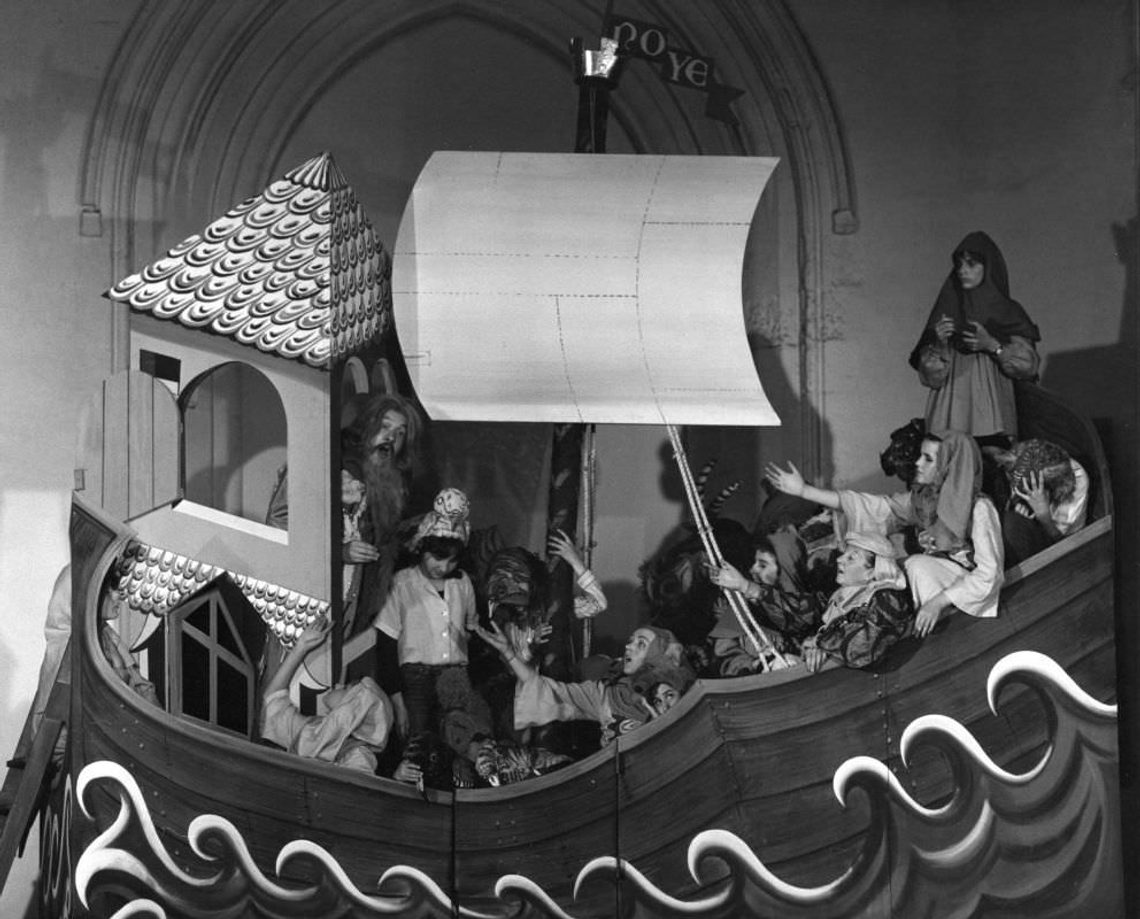
1978 production of Noye’s Fludde in Orford Church. Photographer Nigel Luckhurst.
Despite being born generations apart, Anderson and Britten are kindred spirits when it comes to the work they’ve made for children. Neither have underestimated their young audience, instead smuggling sophisticated themes into clever but approachable creations. If Britten could, according to author John Bridcut, “transmit direct to the inner child in each of us, bypassing the jamming device that is so often interpolated by maturity” the same can be said of Anderson, whose idiosyncratic characters, pastel-coloured visuals and storybook plots are catnip for children and overgrown children alike.
[Britten's] music is something I’ve always remembered, it made a very strong impression on me. It’s the colour of the movie in a wayWes Anderson
Britten’s music has appeared on film in dramas as diverse as Terence Davies’ wrenching 1988 portrait of a working-class Liverpool family, Distant Voices, Still Lives, and last year’s nightmarish serial-killer drama Black Bird (which used Britten’s bittersweet Cuckoo to indelibly creepy effect). The composer also wrote scores – including for a 1936 Agatha Christie adaptation, Love From a Stranger, and the cherished documentary on the London to Glasgow mail train, Night Mail, released the same year. But with Moonrise Kingdom, Britten was the seed from which the story itself grew – Noye’s Fludde captured Anderson’s youthful imagination so thoroughly that he made the decision to use Britten’s music before a script had even been written. “The Britten music had a huge effect on the whole movie,” Anderson said when the film opened Cannes in the spring of 2012. “That music is something I’ve always remembered, it made a very strong impression on me. It’s the colour of the movie in a way.”
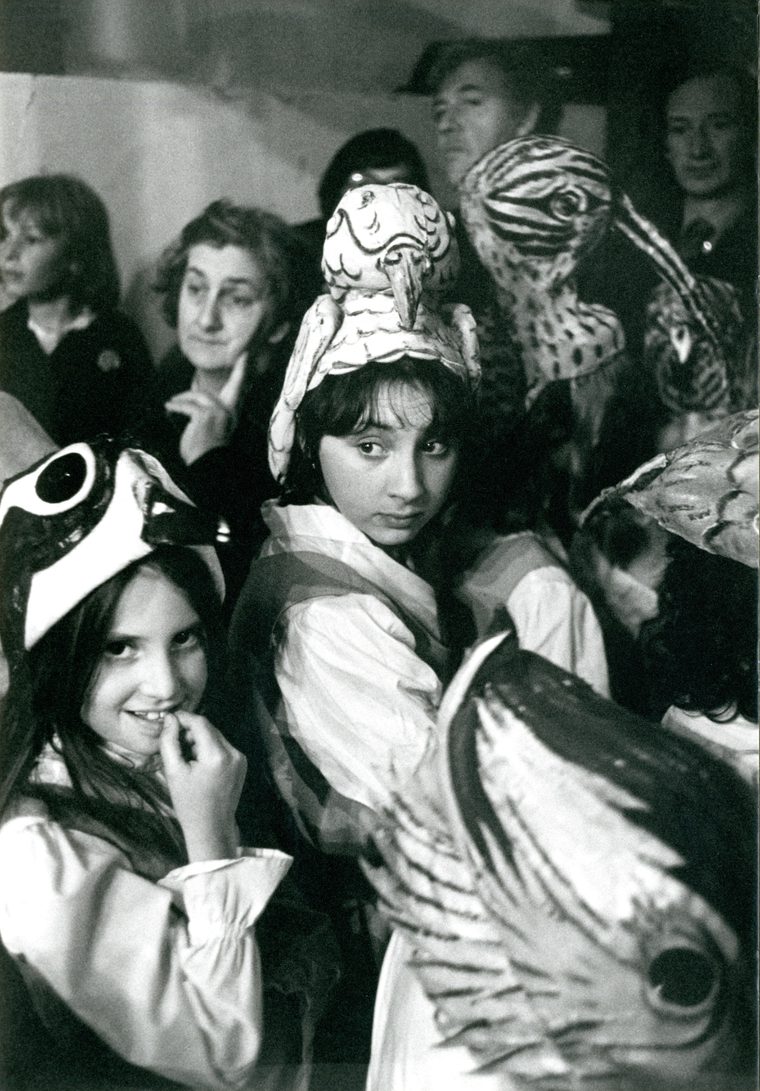
Children in costume in a 1978 production of Noye’s Fludde in Orford Church. Photographer Nigel Luckhurst.
Set on a tiny coastal island in 1960s New England, Moonrise Kingdom’s plot centres on two misfit-but-gifted 12-year-olds who run away together, taking with them a vinyl of Britten’s Young Person’s Guide to the Orchestra, stolen library books and a kitten (the latter’s performance won Cannes’ Palme de Whiskers). A chaotic rescue party ensues to bring the runaways home before a biblical-strength storm hits the coast – a real Noah’s flood to match the theatrical Noye’s Fludde the action pivots around. The precocious escapees first lock eyes backstage amid a cacophony of recorder-playing kids and handmade felt animal costumes at the island’s picturesque church, where an imaginatively homespun performance of Noye’s Fludde is unfolding exactly as Britten would have intended. The composer wrote it to be performed in church halls by a democratic mixture of amateurs, children, the odd professional for ballast and an enthusiastic audience to join in with the hymns. Child-friendly instruments are plentiful, from handbells and bugles to sandpaper blocks and slung mugs, which stand in for the first raindrops of the looming deluge. It’s a “mad circus when it gets going” as Paul Kildea puts it in his biography of Britten, but an undeniably exuberant and community spirited one that enacts Britten’s perennial wish to make his work “useful… to the living.”
Classical pieces are meant to have an audience of children but are not written down to children… are meant to educate children what classical music really is. Britten seemed very motivated by thatWes Anderson
“Noye’s Fludde is a powerful, complex piece and yet it’s meant to involve children,” Anderson told NPR in 2012. “I connect to this period the movie is set in, in which classical pieces are meant to have an audience of children but are not written down to children… are meant to educate children what classical music really is. Britten seemed very motivated by that.” Since the one-act opera first aired in Orford church in July 1958, the challenge of staging it has been taken up across the globe. It’s been performed at a Nuremberg zoo, al fresco in a Shanghai park, and this summer, a historic former railway yard in Manchester, changing shape and mood with every iteration. Props have encompassed gigantic kites, God has appeared in guises including a radio shipping forecaster, and on film it has been set in a South African township with Noah recast as a woman. But Anderson’s celluloid version, realised with the help of his mother’s timeworn photographs of that Houston school production, sent it mainstream. “Part of me is still pinching itself that the music of a modern giant, Benjamin Britten, was used so extensively in a major motion picture,” wrote New Yorker critic Russell Platt at the time.
Britten music is full of possibility and opening up to the world, there’s something grand about itWes Anderson
Joining Noye’s Fludde on the film’s score are two other pieces Britten wrote for children, drawn from his charming Songs from Friday Afternoons – originally composed to give pupils at the school where Britten’s brother was headmaster something to sing at their end-of-the-week music lesson. There’s also the mischievous plucking of Playful Pizzicato from Simple Symphony, Op. 4 (which used material the prodigious composer wrote as a child) soundtracking a search of the island by a motley troop of axe-wielding boy scouts. Elsewhere, A Midsummer Night’s Dream, Act 2 (vocals courtesy of Downside School, Purley), with its theme of romance in a magical forest, mirrors the film’s lovestruck protagonists and their dreamlike escape into the wilderness. “Britten music is full of possibility and opening up to the world, there’s something grand about it,” explained Anderson to NPR. In Moonrise Kingdom he uses the composer to conjure a nostalgic sense of childhood wonder – it’s the flipside to Hank Williams’ melancholy country laments, full of adult disappointment and loss, played by the film’s lonely sheriff on his car radio.
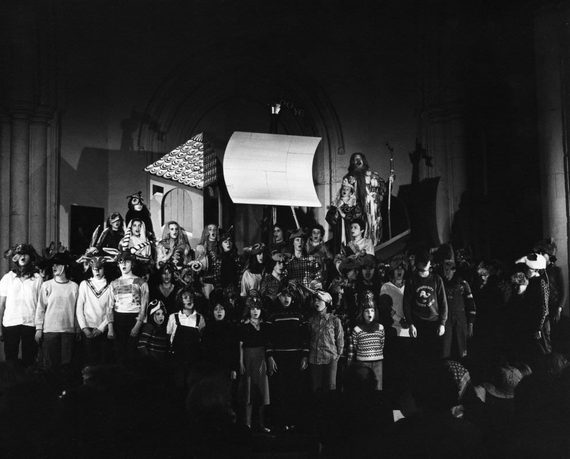
1978 production of Noye’s Fludde in Orford Church. Photographer Nigel Luckhurst.
In Wes Anderson’s young life, his so-called troubled behaviour and his love of amateur dramatics were joined together by a perceptive teacher – every time Anderson earned enough brownie points for good behaviour, she would allow him to put on a five-minute play for his classmates. In the fiction of Moonrise Kingdom, Anderson’s pair of troubled tweens also navigate themselves towards a kind of harmony at the end of their odyssey. The film opens with a boy dropping the needle on a record of Britten’s Young Person’s Guide to the Orchestra. As the music’s narrator introduces the separate instruments of the orchestra, Anderson’s camera glides through a neat house in which each character is so estranged from the other, emotionally and geographically, one uses a megaphone to communicate. By the closing credits, the idea of Young Person’s Guide… is back, but this time the instruments are joined together in a fugue, just as Moonrise Kingdom’s island community have been brought closer by their stormy tribulations. Much like Noye’s Fludde, Young Person’s Guide… reflects Britten’s lifelong desire to make classical music more accessible to children. In Moonrise Kingdom, Anderson repaid the favour, bringing Britten’s music to a 21st-century audience of moviegoers. Along the way, he sent Britten to the top of the classical charts the year it was released, over three decades after the composer’s death.
Main image: still from Moonrise Kingdom, directed by Wes Anderson / Alamy
Read next
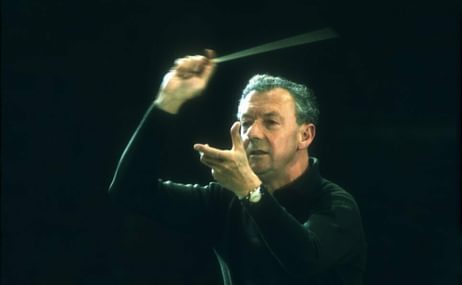
Who was Benjamin Britten?
Benjamin Britten was one of the twentieth century’s great composers. He is particularly known for his operas, but also for choral works, and the many…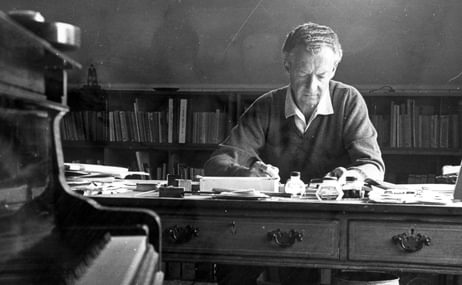
Inside Benjamin Britten’s creative process: A film by Emily Richardson
Britten’s creative inspiration came from where he lived and worked. How did composing while walking in this particular Suffolk landscape shape the…
Free Music for Schools
10 brilliant composers, Alexander Campkin, Alice Zawadzki, Ayanna Witter-Johnson, Ben Parry, CN Lester, Charlotte Harding, Kerry Andrew,…
